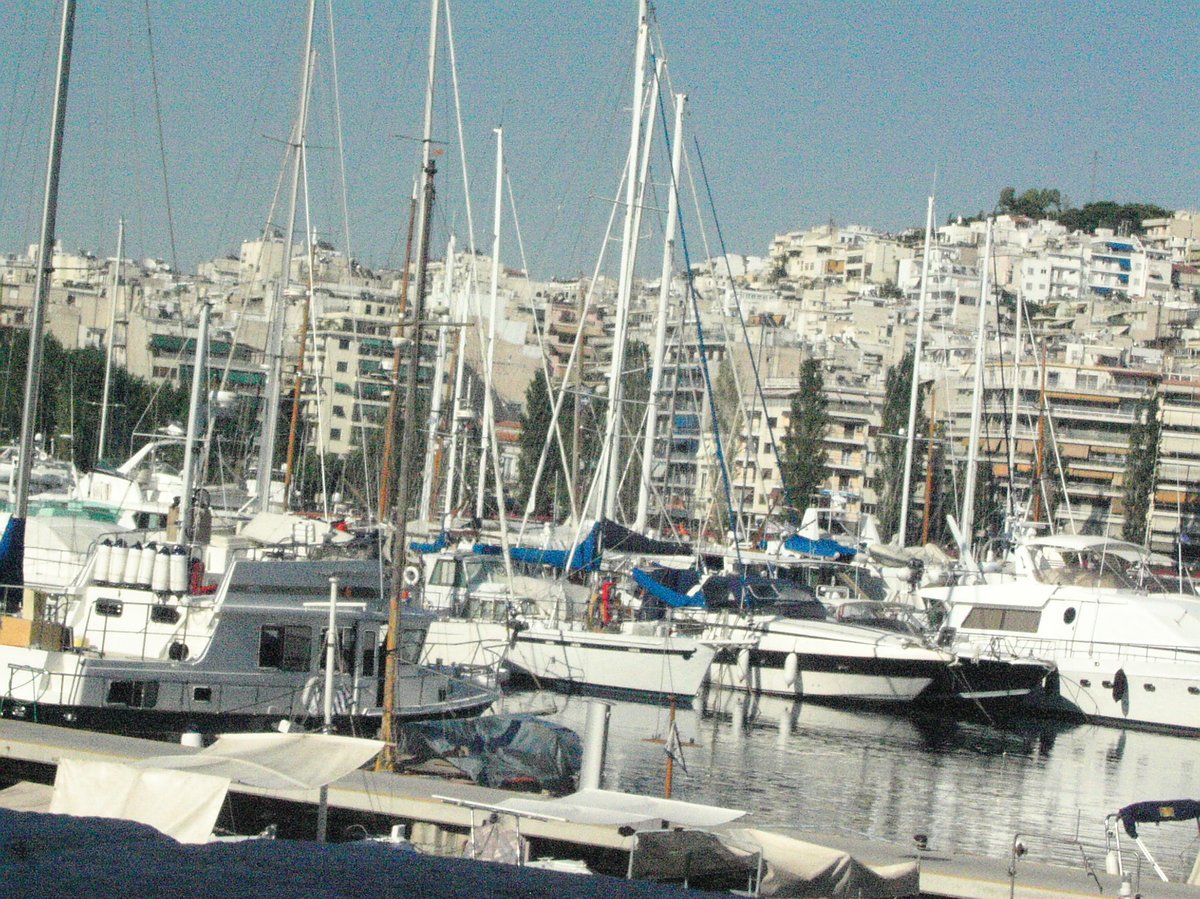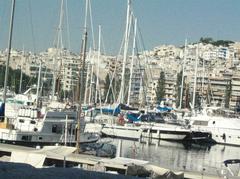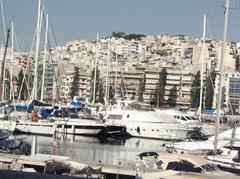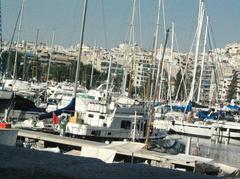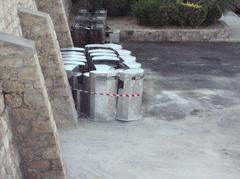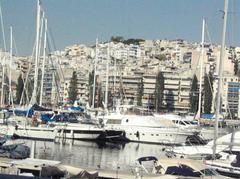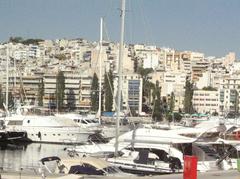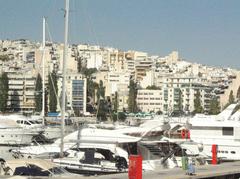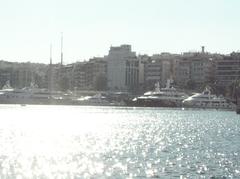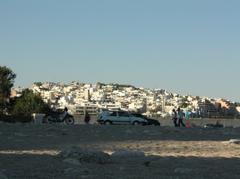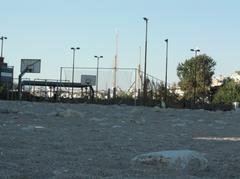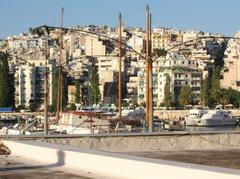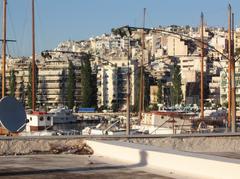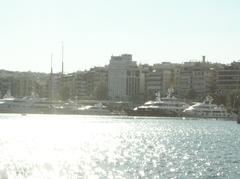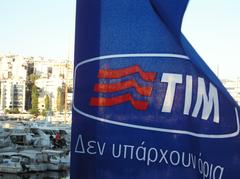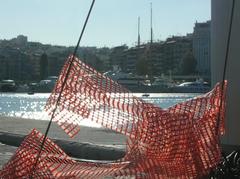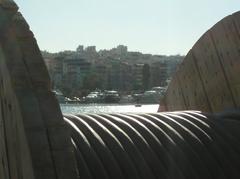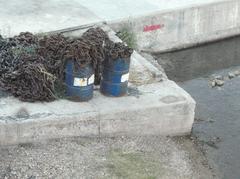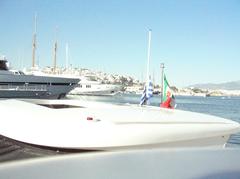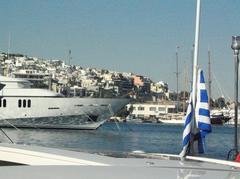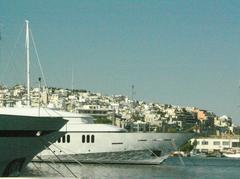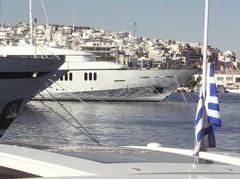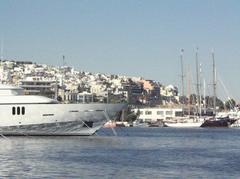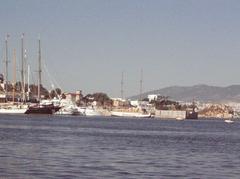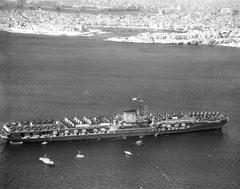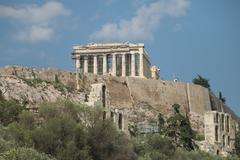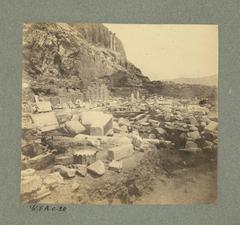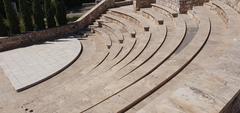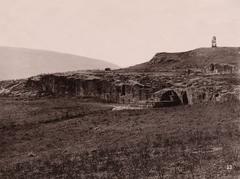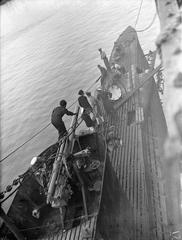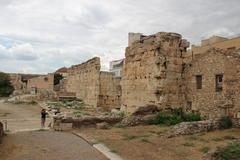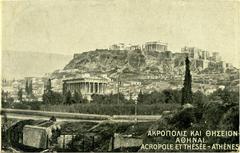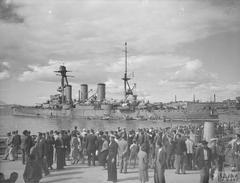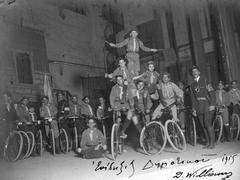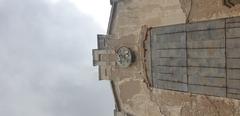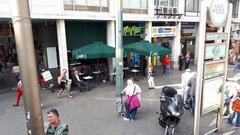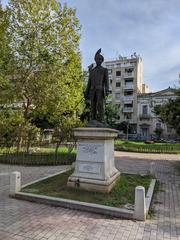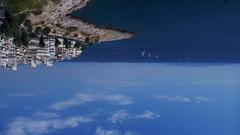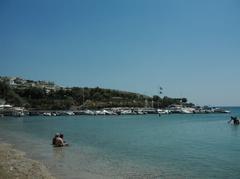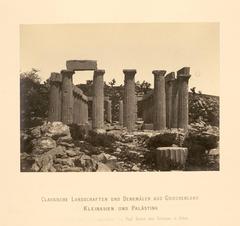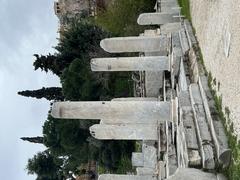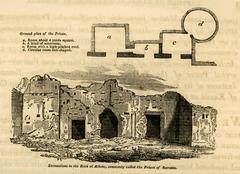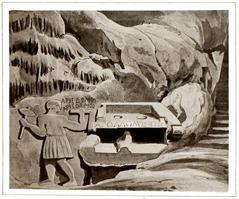Zea Harbor Piraeus, Greece: Visiting Hours, Tickets, and Attractions Guide
Date: 14/06/2025
Introduction
Just 12 kilometers southwest of Athens, nestled in the heart of Piraeus along the Saronic Gulf, Zea Harbor—also known today as Marina Zea or Pasalimani—stands as a remarkable testament to ancient maritime heritage and contemporary leisure. Once a vital hub for ancient Athens’ naval supremacy, Zea Harbor played a crucial role in the classical era, serving as home to the famous trireme fleet that distinguished itself in historic battles like Salamis in 480 BCE. Conceptualized with an innovative radial design by the urban planner Hippodamus of Miletus in the 5th century BCE, Zea’s harbor was further fortified by the Themistoclean Walls and integrated into the Long Walls, which connected Athens directly to its ports, underscoring its military and commercial importance. Over the centuries, Zea transformed from a fortified naval base into a fishing port during the Byzantine and Ottoman periods, eventually being revitalized into one of Greece’s premier superyacht marinas, boasting 670 berths and undergoing significant upgrades for the 2004 Olympic Games.
Today, visitors to Zea Harbor can freely access the vibrant waterfront promenade, which is bustling with cafes, restaurants, and shops. Nearby cultural landmarks, such as the Archaeological Museum of Piraeus and the Hellenic Maritime Museum, offer enriching insights into the area’s profound naval and archaeological legacy. The harbor remains a dynamic center where ancient ruins, including remnants of ship sheds and fortifications, coexist with luxury yachts and lively festivals, providing a unique visitor experience that spans millennia of Greek maritime history and culture. Whether you identify as a history enthusiast interested in Piraeus’ historical sites or a traveler seeking scenic waterfront dining and relaxation, this guide offers comprehensive information on visiting hours, ticketing, accessibility, and insider tips to optimize your visit to this captivating maritime landmark.
Contents
- Introduction
- Historical Overview
- Ancient Origins and Urban Design
- Naval Power and Shipyards
- Fortifications and Urban Integration
- Decline and Modern Transformation
- Visiting Zea Harbor: Practical Information
- Visiting Hours
- Tickets and Admission
- Accessibility
- Guided Tours and Events
- Best Photographic Spots
- Nearby Attractions
- Archaeological and Cultural Significance
- Frequently Asked Questions (FAQ)
- Plan Your Visit and Explore More
Historical Overview
Ancient Origins and Urban Design
Zea Harbor’s strategic position along the Saronic Gulf established it as one of the three primary harbors of ancient Piraeus, alongside Kantharos and Munichia (now known as Mikrolimano). Its name is believed to originate from the Greek word for “boiling,” possibly a reference to its bustling waters. In the early 5th century BCE, during a period of significant Athenian naval expansion, the renowned urban planner Hippodamus of Miletus was responsible for designing Piraeus with an innovative grid system. Zea Harbor itself was characterized by a unique radial layout, meticulously planned to optimize both access and defense.
Naval Power and Shipyards
By the 5th century BCE, Zea had become the largest harbor in Athens, housing extensive stone ship sheds, known as “neosoikoi.” These structures were crucial for protecting the city’s formidable trireme fleet, which played a pivotal role in historic naval victories, most notably the Battle of Salamis. The harbor was supported by a skilled workforce of artisans and shipwrights who managed naval operations. Financial oversight was provided by the En Zea Treasury of the Attic Navy.
Fortifications and Urban Integration
Following the Persian Wars, the implementation of the Themistoclean Walls and the Long Walls created a fortified corridor, effectively linking Zea Harbor to Athens. This integration fostered a dynamic urban ecosystem, seamlessly blending military, residential, and commercial activities within Zea.
Decline and Modern Transformation
After Athens suffered defeat in the Peloponnesian War, Zea’s military importance gradually declined. It later functioned primarily as a fishing port through the Byzantine and Ottoman periods. The redevelopment of Piraeus in the 19th century led to Zea’s revitalization. More recent archaeological excavations, particularly those conducted during the expansion of the Athens Metro, have unearthed significant ancient remains. Today, Marina Zea boasts 670 modern berths, harmoniously integrating contemporary amenities with visible traces of ancient walls and dockyards.
Visiting Zea Harbor: Practical Information
Visiting Hours
- Promenade & Marina: Open 24 hours a day, 7 days a week, with free public access.
- Naval Museum of Greece: Open Tuesday through Sunday, from 9:00 AM to 5:00 PM. Closed on Mondays.
- Archaeological Museum of Piraeus: Open Tuesday through Sunday, from 8:00 AM to 3:00 PM. Closed on Mondays.
- Hellenic Maritime Museum: Open Tuesday through Sunday, from 9:30 AM to 3:30 PM. Closed on Mondays.
It is advisable to always check the official websites of the museums for any seasonal variations or closures during public holidays.
Tickets and Admission
- Harbor & Promenade: Access is completely free.
- Naval Museum of Greece: The admission fee is approximately €5 for adults, with discounted rates available for students and seniors.
- Archaeological Museum of Piraeus: Tickets cost approximately €4–€5 for adults. Reduced rates are offered for EU citizens under 25, and entry is free for children under 18.
- Hellenic Maritime Museum: The entrance fee is €6 for adults, with reduced rates available for eligible visitors.
Tickets can typically be purchased either on-site at the respective museum or online through their official websites.
Accessibility
- The promenade and the main museums are designed to be wheelchair accessible, featuring ramps and accessible restrooms.
- Getting to Zea Harbor is convenient via Metro Line 1 (Piraeus station), local buses, and taxis. Parking availability can be limited, especially during peak times.
Guided Tours and Events
- Several local tour operators offer guided walking tours that focus on Zea Harbor’s historical sites, maritime history, and culinary experiences. Booking these tours in advance is recommended, especially during the high season.
- Zea Harbor is also host to several annual events, including the popular Sea Days festival, the Piraeus Taste Festival, and open-air concerts held at the nearby Veakeio Theatre.
Best Photographic Spots
- Waterfront Promenade: Offers stunning panoramic views of the marina and the Saronic Gulf.
- Stone Clock of Zea: A local landmark dating back to 1940, perfect for a classic photo.
- Kanari Square: Features archaeological ruins that provide historical context for your photos.
- Kastella Hill: Located nearby, it provides sweeping views of the harbor and the cityscape.
Nearby Attractions
- Mikrolimano Harbor: A charming and picturesque fishing port, famous for its excellent seafood restaurants.
- Kastella District: Offers magnificent panoramic viewpoints and the Veakeio open-air theatre.
- Piraiki Peninsula: A scenic coastal stretch lined with fish tavernas and offering a relaxed ambiance.
- Votsalakia Beach: A pebble beach ideal for swimming and sunbathing.
Archaeological and Cultural Significance
The designation of Zea Harbor as an archaeological site in 2019 underscores its critical role in Athens’ historical maritime dominance. Ongoing excavations, notably as part of the Zea Harbour Project, have revealed extensive ancient naval infrastructure, including well-preserved ship sheds and fortifications. These discoveries, coupled with insightful museum exhibits, provide a unique perspective on the engineering and urban planning achievements of classical Greece.
Frequently Asked Questions (FAQ)
Q: What are Zea Harbor’s visiting hours? A: The promenade is accessible 24/7. The Naval Museum of Greece and the Hellenic Maritime Museum are generally open Tuesday–Sunday, with specific closing times in the afternoon. The Archaeological Museum of Piraeus also operates Tuesday–Sunday, closing in the afternoon.
Q: Is there an entry fee for Zea Harbor? A: The harbor and its promenade are free to access. Separate tickets are required for entry into the museums.
Q: Is Zea Harbor wheelchair accessible? A: Yes, the promenade and the main museums are equipped with ramps and accessible facilities, making them wheelchair friendly.
Q: How do I get to Zea Harbor from central Athens? A: You can take Metro Line 1 (Green Line) to Piraeus station, and then enjoy a short walk or a quick taxi ride to the harbor.
Q: Are guided tours available? A: Yes, guided tours can be booked through local operators or directly from museums, focusing on history, archaeology, and culinary aspects.
Q: Can I take ferries to the Saronic Islands from Zea Harbor? A: Yes, Zea Harbor is a departure point for hydrofoils and ferries heading to the Saronic Islands. It’s recommended to check ferry schedules in advance.
Plan Your Visit and Explore More
Zea Harbor serves as a living testament to Athens’ rich maritime heritage, artfully merging ancient ruins with vibrant waterfront life and modern luxury. To enhance your visit:
- Verify the current operating hours and ticketing information on the respective museum websites.
- Secure your spot by booking guided tours in advance, particularly during busy periods.
- Enhance your exploration by downloading the Audiala app, which provides interactive maps, self-guided tours, and up-to-date event listings.
- Delve deeper into Piraeus’ history and Athens’ maritime culture by exploring our related articles.
Summary and Recommendations
Zea Harbor in Piraeus offers visitors a multifaceted experience, allowing them to stroll along a palm-lined promenade, dine with views of the Saronic Gulf, and explore museums that house some of Greece’s most significant maritime artifacts. The harbor’s free access, accessibility features, and convenient proximity to Athens make it an excellent choice for day trips or longer stays. Whether you choose to attend seasonal festivals, capture picturesque sunset vistas, or embark on island adventures, Zea Harbor provides a remarkable gateway to Greece’s seafaring tradition.
For the most current information, we recommend downloading the Audiala app, following our social media channels, and consulting official resources prior to your visit.
References and Official Resources
- A Brief History of the Ancient Ports of Piraeus, Savoy Hotel https://savoyhotel.gr/a-brief-history-of-the-ancient-ports-of-piraeus/
- About Piraeus, Greek Boston https://www.greekboston.com/culture/ancient-history/about-piraeus/
- Piraeus Zea, Athens Guide https://www.athensguide.org/piraeus-zea.html
- Exploring the Pocket Ruins of Piraeus, Greece Is https://www.greece-is.com/exploring-the-pocket-ruins-of-piraeus-map-included/
- Zea Marina, Greek Marinas https://greek-marinas.gr/en/marinas/zea-marina/
- Best Things to Do in Piraeus, Eskapas https://eskapas.com/best-things-to-do-in-piraeus/
- Recovering Athens’ Ancient Harbour: The Zea Harbour Project, World History et cetera https://etc.worldhistory.org/interviews/recovering-athens-ancient-harbour-the-zea-harbour-project-interview/
- Zea Harbour Project, Danish Institute at Athens https://diathens.gr/en/projects/piraeus
- Port of Piraeus Top Attractions, Piraeus.org https://www.piraeus.org/top-attractions.html
- Piraeus Itinerary, Adventure Backpack https://adventurebackpack.com/piraeus-itinerary/
- Hellenic Ministry of Culture Official Website https://www.culture.gov.gr
- Hellenic Maritime Museum Official Website http://www.hmmuseum.gr/en/
